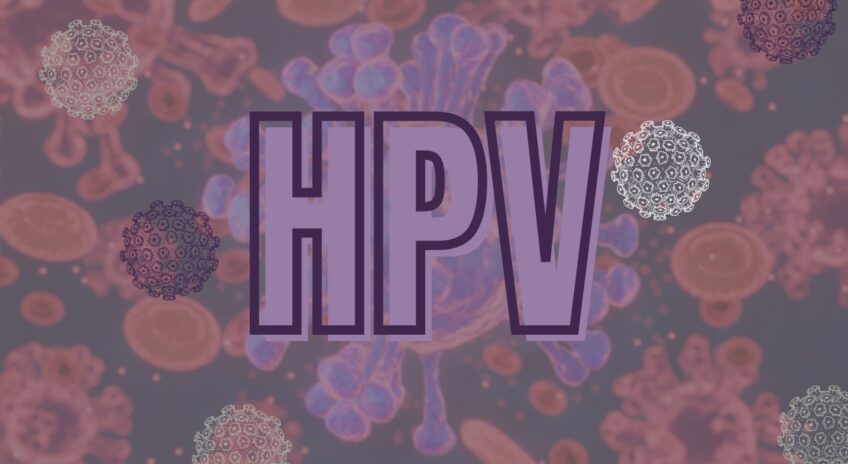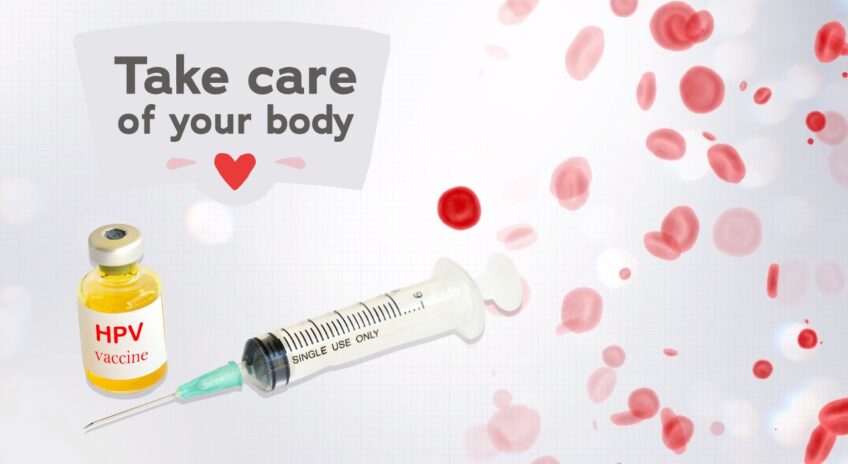Human Papillomavirus (HPV) is a common viral infection that affects millions of people worldwide. Despite its prevalence, many aspects of the virus, such as its dormancy period, remain a mystery to many. Dormancy in viruses refers to a phase where the virus is present in the body but does not cause any symptoms or disease.
This is a significant characteristic of the virus, as it can remain dormant in the body for years, even decades, before becoming active and causing health problems. It is crucial to understand this dormancy phase as it can help in the early detection and prevention of HPV-related diseases.
It has implications for screening programs, vaccine development, and public health strategies. By shedding light on this aspect of the virus, we can better equip ourselves to combat this pervasive virus.
HPV and Its Types
This is a complex virus with various strains, each associated with different health risks. The strains are broadly classified into two categories: low-risk and high-risk. Low-risk types, such as HPV 6 and 11, can cause conditions like genital warts.
On the other hand, high-risk types, including HPV 16 and 18, are associated with various forms of cancer, including cervical, anal, and oropharyngeal cancers. Despite the potential severity of these conditions, most infections are asymptomatic and clear up on their own.
However, when the virus doesn’t clear and becomes persistent, it can lead to serious health problems. This is particularly true for high-risk types of the virus, which can lead to cancer if left untreated.
It s essential to understand different types of the virus and their associated risks, as it is the first step toward effective prevention and treatment. It helps individuals make informed decisions about their health, such as opting for regular screenings and getting vaccinated.
Dormant Phase

The dormant phase, also known as the latent phase, is a period during which the virus is present in the body but does not cause any symptoms or disease. During this phase, the virus integrates its DNA into the host’s cells and remains inactive.
This means that while the virus is present, it is not causing any harm or showing any signs of its presence. HPV’s ability to enter a dormant state is one of the reasons why it is such a prevalent and persistent infection. The virus can lie dormant in the basal cells of the skin or mucosa, often for years, before reactivating and causing symptoms.
This dormancy can make it challenging to diagnose and treat these infections effectively. The length of the dormant phase can vary greatly, from months to several decades. This variability makes it difficult to determine when an individual was infected, complicating efforts to prevent transmission and treat the infection.
Duration of HPV Dormancy
The duration of HPV dormancy is highly variable and can range from months to decades. Some studies suggest that the average dormancy period is about 12-24 months, but it can be much longer in some cases.
Different strains of the virus may also have different dormancy periods. For example, high-risk strains, such as HPV 16 and 18, are thought to have longer dormancy periods than low-risk strains. However, more research is needed to fully understand these differences and their implications for disease progression and treatment.
Factors Influencing Dormancy Duration

The duration of dormancy can be influenced by several factors. One of the most significant is the individual’s immune system. A strong immune response can often clear the virus before it causes symptoms, while a weaker immune response may allow the virus to enter a dormant state.
Other factors that can influence the length of dormancy include the strain of HPV and the individual’s overall health.
Certain strains of the virus are more likely to become dormant than others, and individuals with compromised immune systems, such as those with HIV/AIDS or those undergoing chemotherapy, are more likely to experience longer periods of dormancy.
Understanding these factors can help healthcare providers predict the likely course of an HPV infection and develop appropriate treatment plans. It can also inform public health strategies, such as vaccination programs, by identifying individuals who are at higher risk of long-term dormancy.
Virus Transmission during Dormancy
One of the most concerning aspects of HPV dormancy is the potential for transmission. Even when the virus is dormant and causing no symptoms, it can still be transmitted to others through skin-to-skin contact. This makes the virus a particularly insidious infection, as individuals may unknowingly spread the virus to their partners.
The risk of transmission during dormancy underscores the importance of preventive measures, such as regular screenings and vaccination. Even individuals who have no symptoms of the virus should consider these measures to protect themselves and their partners.
It’s also worth noting that the use of condoms and dental dams can reduce the risk of HPV transmission, but they do not eliminate it entirely. This is because the virus can infect areas not covered by these barriers. Therefore, while these methods are important, they should be used in conjunction with other preventive measures.
How to detect it?
Detecting dormant HPV is a significant challenge. Because the virus causes no symptoms during this phase, it often goes unnoticed until it becomes active and causes health problems. However, there are tests available that can detect the presence of the virus DNA, indicating an active or dormant infection.
For women, the most common method of detection is through a Pap smear, which can identify changes in the cervical cells that may indicate an infection. If abnormal cells are found, a follow-up test called an HPV test can be done to determine if the virus is the cause.
For men, there is currently no approved HPV test. However, some doctors may use an anal Pap smear to detect the virus in men who are at high risk. Despite these challenges, research is ongoing to develop more effective methods of detecting dormant virus in all individuals.
Which Factors Lead to Reactivation?
While the triggers for the reactivation of the virus are not fully understood, several factors are thought to play a role. These include a weakened immune system, hormonal changes, and other infections.
For example, individuals with compromised immune systems, such as those with HIV/AIDS or those undergoing chemotherapy, are more likely to experience reactivation. Hormonal changes, such as those that occur during pregnancy or menopause, may also trigger HPV reactivation.
Additionally, other infections can weaken the immune system and create an environment that allows the virus to reactivate. For example, individuals with weakened immune systems may need to take extra precautions to prevent it, such as getting regular screenings and maintaining a healthy lifestyle.
Dormancy and HPV-Related Diseases
The relationship between dormancy and the development of HPV-related diseases is complex. While most dormant infections will never cause symptoms or disease, some can reactivate and lead to serious health problems, such as genital warts and cancer.
The risk of developing these diseases depends on several factors, including the strain of the virus and the individual’s immune response. High-risk strains of the virus are more likely to lead to cancer, while low-risk strains are more likely to cause genital warts.
Understanding this relationship can help individuals and healthcare providers manage the risks associated with dormancy. Regular screenings can help detect HPV-related diseases early, when they are most treatable, and vaccination can help prevent the most dangerous strains of the virus.
Cervical Cancer
This is the most well-known health problem associated with the virus. Persistent infection with high-risk HPV types, particularly types 16 and 18, can lead to the development of cervical cancer in women.
Other Genital Cancers

In addition to cervical cancer, high-risk HPV types can also cause other types of genital cancers, including vulvar, vaginal, penile, and anal cancers.
Oropharyngeal Cancers
HPV, particularly type 16, is a risk factor for certain types of oropharyngeal (throat) cancers, including cancers of the base of the tongue and tonsils.
Genital Warts
Certain low-risk types of the virus, such as types 6 and 11, can cause genital warts in both men and women. While these are not life-threatening, they can cause discomfort and distress.
Recurrent Respiratory Papillomatosis (RRP)
This is a rare condition caused by HPV types 6 and 11, in which warts grow in the throat. These can sometimes cause problems with breathing or voice. It’s important to note that while HPV can cause these serious health problems, not everyone who has the virus will develop these conditions.
Many infections clear up on their own without causing any health problems. Regardless, regular screenings, such as Pap tests for women, can help detect changes in the body that might indicate an HPV-related health problem. Additionally, vaccines are available that can protect against the most dangerous types of the virus.
Vaccination
HPV vaccines are a powerful tool in the fight against the virus. They protect against the most dangerous strains of the virus, reducing the risk of HPV-related diseases. But what about dormant infections? Can the vaccine help in these cases? The answer is complex.
While the vaccine cannot cure an existing infection, it can protect against other strains of the virus. This means that even if an individual has a dormant HPV infection, they can still benefit from vaccination.
Some research suggests that the vaccine may help boost the immune response to the virus, potentially helping to clear dormant infections. However, more research is needed to fully understand the vaccine’s impact on dormant HPV.
Preventive Measures
Preventing reactivation and transmission of the virus during dormancy is crucial. Regular screenings can help detect HPV-related diseases early, when they are most treatable. Vaccination can also help prevent the most dangerous strains of the virus.
In addition to these medical interventions, lifestyle choices can also play a role in preventing HPV reactivation. Maintaining a healthy lifestyle, including a balanced diet, regular exercise, and adequate sleep, can help boost the immune system and reduce the risk of reactivation.
Furthermore, safe sexual practices, such as using condoms and dental dams, can help prevent transmission. However, these methods do not eliminate the risk entirely, as HPV can infect areas not covered by these barriers. They should be used in conjunction with other preventive measures.
How to manage the Infections?

Managing dormant infections can be challenging due to the lack of symptoms and the potential for reactivation. However, there are strategies that can help. Regular check-ups and screenings can help detect HPV-related diseases early, when they are most treatable.
For individuals with high-risk infections, more frequent screenings may be recommended. In addition to medical interventions, lifestyle choices can also play a role in managing dormant HPV infections.
Maintaining a healthy lifestyle, including a balanced diet, regular exercise, and adequate sleep, can help boost the immune system and reduce the risk of HPV reactivation. Individuals with dormant HPV infections should be aware of the potential for transmission and take steps to protect their partners.
This includes practicing safe sex and considering vaccination if they have not already been vaccinated.
FAQs:
Are there any supplements or medications to treat dormant HPV?
Currently, there are no specific supplements or medications proven to treat this virus.
Can the virus be reactivated after menopause?
Yes, dormant virus can potentially reactivate after menopause, though menopausal changes may affect the immune system’s response to the virus.
Is it possible for a person to have multiple infections simultaneously?

Yes, it is possible for a person to have multiple infections from different HPV strains.
Does the duration of dormancy differ between men and women?
HPV dormancy duration is not known to significantly differ between men and women.
Can the virus affect fertility or pregnancy?
In some cases, certain strains may cause complications during pregnancy, but dormant HPV is generally not a concern during this time.
Conclusion
Understanding the dormancy of HPV is a critical aspect of managing this pervasive virus. It has implications for prevention, treatment, and public health strategies. By shedding light on this aspect of the virus, we can better equip ourselves to combat this virus and reduce the burden of related diseases.
Regular screenings, vaccination, and safe sexual practices are crucial in preventing them. Furthermore, maintaining a healthy lifestyle can help boost the immune system and reduce the risk of reactivation.
As we continue to learn more about the virus and its dormancy, we can look forward to advancements in detection methods, treatments, and preventive measures. With ongoing research and increased awareness, we can hope for a future where this virus is less of a threat to our health and well-being.

